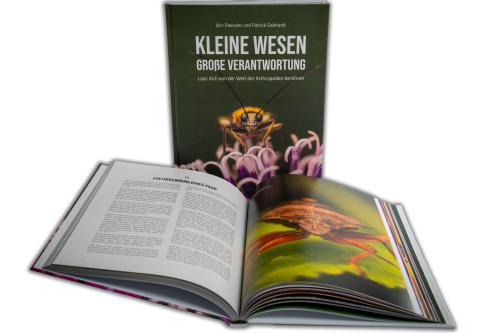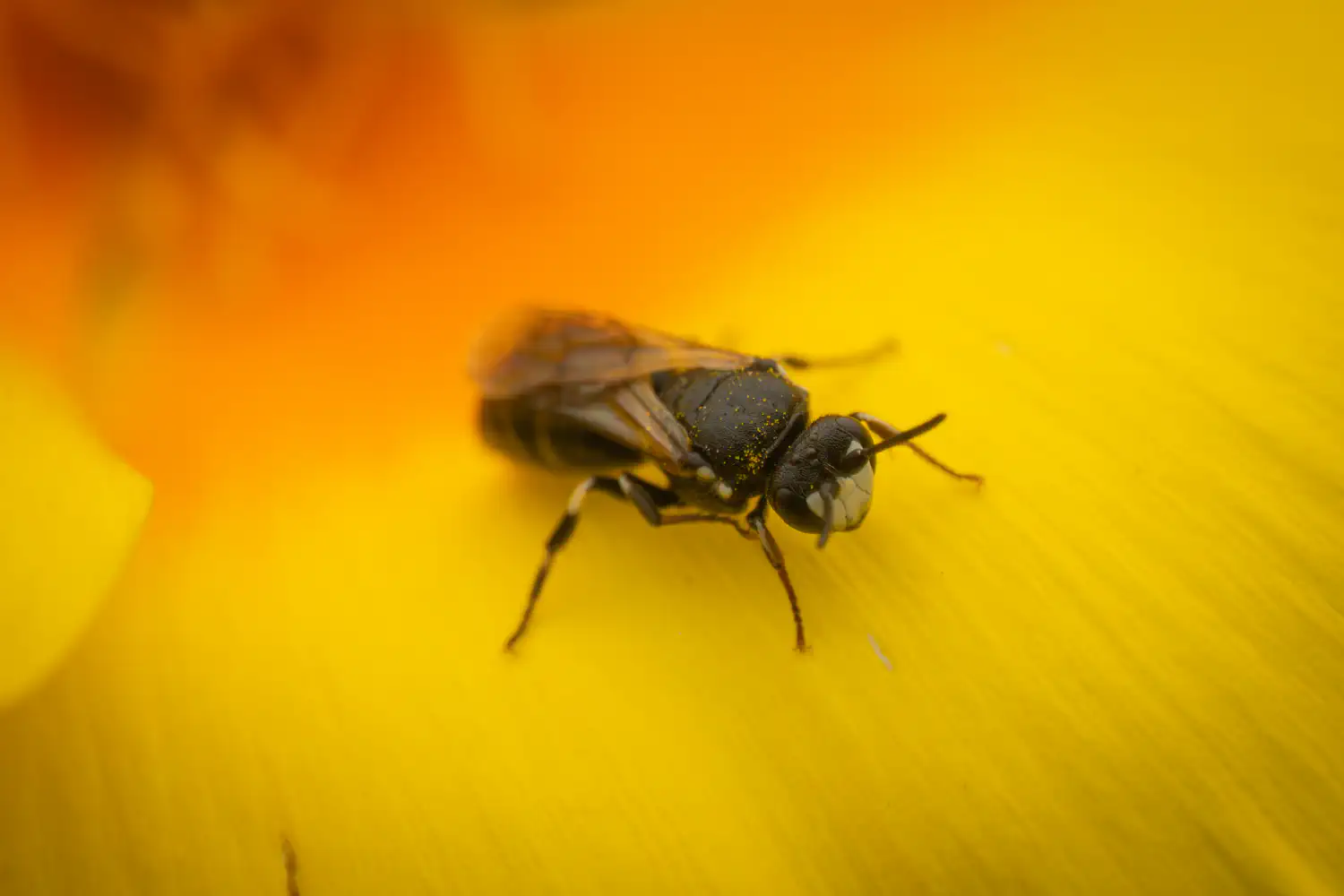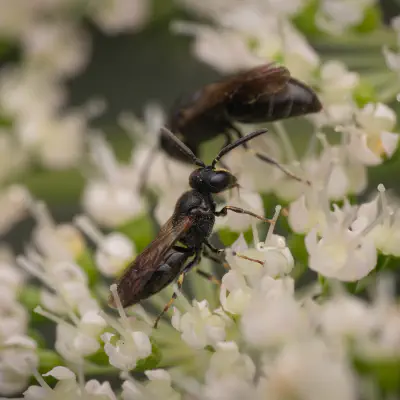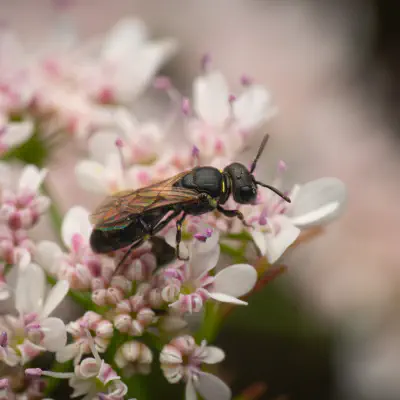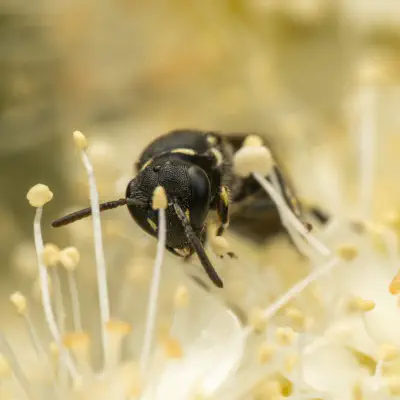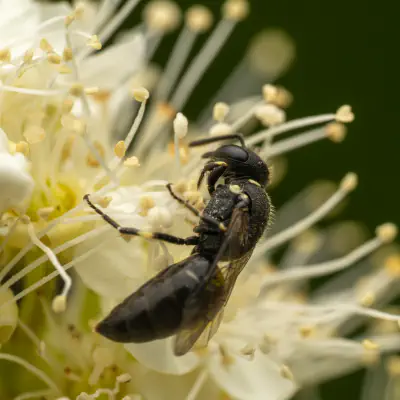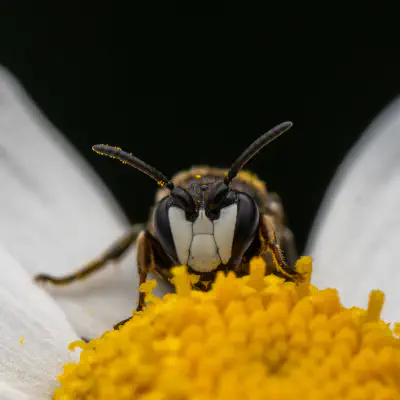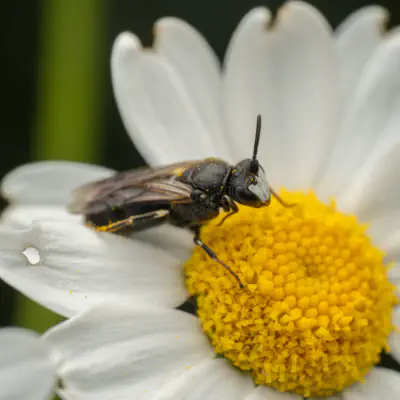Masked Bees Lat. “Hylaeus“
Hylaeus is a large (>500 species) and diverse cosmopolitan genus within the bee family Colletidae.
Hierarchy
Description
The genus of bees consists of generally small, black-and-yellow or black-and-white wasp-like species. The resemblance to wasps is enhanced by the absence of a scopa, which is atypical among bees. The body form of this genus is described as hylaeiform (slender); the hairs inconspicuous without magnification; and scopa inconspicuous or absent. Males have an intermediate glossal shape with a small to distinct median apical glossal point. Hylaeus carry pollen in the crop, rather than externally, and regurgitate it into the cell where it will be used as larval food. Like most colletids, the liquid provisions are sealed inside a membranous cellophane-like cell lining. Nests are typically made in dead twigs or plant stems, or other similarly small natural cavities, rather than constructing or excavating their own nests as in many other bees. Some species of Hylaeus have been associated with strong scents. In particular, European species such as Hylaeus prosopis are characterised by having a strong “lemon-like” scent. Further investigation has attributed this scent to a substance generated by the mandibular glands of both males and females, composed of neral and geranial. It is believed this substance is used as a defensive secretion and/or a social pheromone.
Distribution and status
A significant diversity of Hylaeus is found in Hawaii — approximately 64 species are recorded as living there. Hylaeus are the only bees considered native to the islands and most of those are unique to the island chain; the diversity of this genus is far greater in Hawaii than in all of mainland North America. Many of them are species of concern, and some recorded there are possibly extinct. For example, H. finitimus was last collected 100 years ago, and only ever seen on the island of Kauaʻi. The Hawaiian bee population and diversity is somewhat fluid — within the past ten to twenty years several Hylaeus species have been found and identified on the islands as new to science. In October 2016, seven species were officially listed as endangered by U. S. Fish & Wildlife, the first bees to ever be placed on the endangered species list.
Conservation
Nearly half of the Hylaeus species found in Hawaii are under threat, primarily due to loss and alteration of habitats. An estimated 10 species of Hylaeus may already be extinct in the Hawaiian Islands. Hylaeus hirsutulus from Kauaʻi; H. angustulus from Maui Nui; H. kukui from Maui and Hawaiʻi island; H. crabronoides, H. filicum, H. muranus (= insignis), and H. rugulosus from Hawaiʻi; and H. specularis from Hawaiʻi, Molokaʻi, Oʻahu, and Kauaʻi (and presumedly Maui) all have only been collected and recorded in low numbers. These populations may potentially be under threat, however also exist in relatively large areas, and so may exist in larger populations than currently known. These species require further investigation to conclusively determine their status. In the past 30 years, only three specimens of Hylaeus facilis have been collected from the Hawaiian Islands - one from Oʻahu in 1975, one from Maui in 1993, and one from Molokaʻi in 2005. Previous to 1930, this species had been described as widespread and abundant. It remains uncertain why these populations have decreased significantly while substantial habitat remains and closely related species remain abundant. Hawaiian species H. anthracinus is known to be affected by the presence of invasive ant species, decreasing both nest success and the number of adults produced per successful nest. The black household ant (Ochetellus glaber) has been observed depredating nests, removing pollen, eggs, larvae and pupae. The African big-headed ant (Pheidole megacephala) can co-exist with H. anthracinus at low densities, however excludes them from ground-nesting opportunities when populations rise. In contrast, the yellow crazy ant (Anoplolepis gracilipes) is known to expand rapidly and remove this species from its range. In Australia, the presence of commercial honey bees has been found to reduce the fecundity of the endemic Hylaeus alcyoneus, with 23% less nests being made when honey bees were present.
Selected species
Species of Hylaeus include: Hylaeus agilis (Smith, 1876) Hylaeus alcyoneus (Erichson, 1842) - banksia bee Hylaeus anthracinus (Smith, 1853) – anthricinan yellow-faced bee Hylaeus assimulans (Perkins, 1899) – assimulans yellow-faced bee Hylaeus facilis (Smith, 1879) – easy yellow-faced bee Hylaeus globuliferus (Cockerell, 1929) Hylaeus hilaris (Smith, 1879) – hilaris yellow-faced bee Hylaeus krombeini Snelling, 1980 Hylaeus kuakea Magnacca & Daly, 2003 Hylaeus longiceps (Perkins, 1899) - longhead yellow-faced bee Hylaeus mana Magnacca & Daly, 2003 Hylaeus nigritus (Fabricius, 1798) Hylaeus punctatus (Brullé, 1832) Hylaeus sanguinipictus (Cockerell, 1914) Hylaeus sedens Snelling, 1980 Hylaeus signatus (Panzer, 1798)
See also
List of Hylaeus species
External links
Worldwide Hylaeus species Distribution Map List of Hylaeus Species Female Hylaeus Identification Guide Male Hylaeus Identification Guide
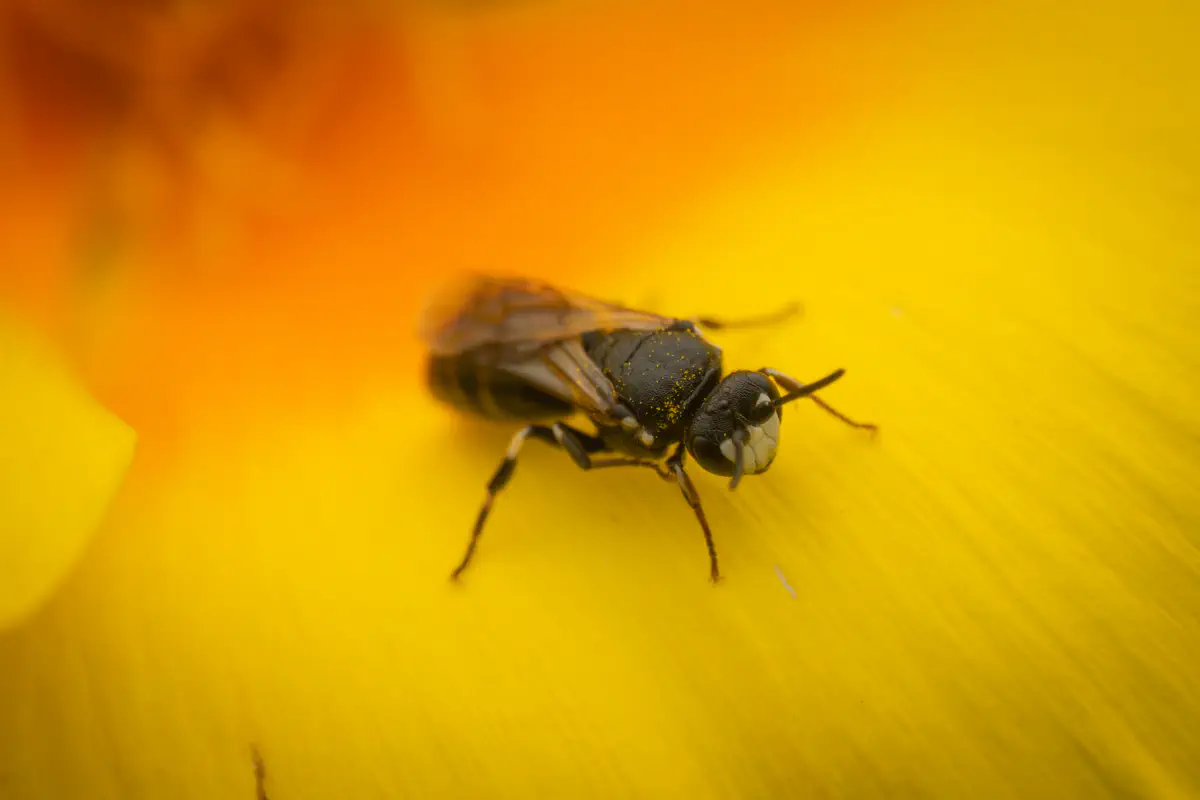
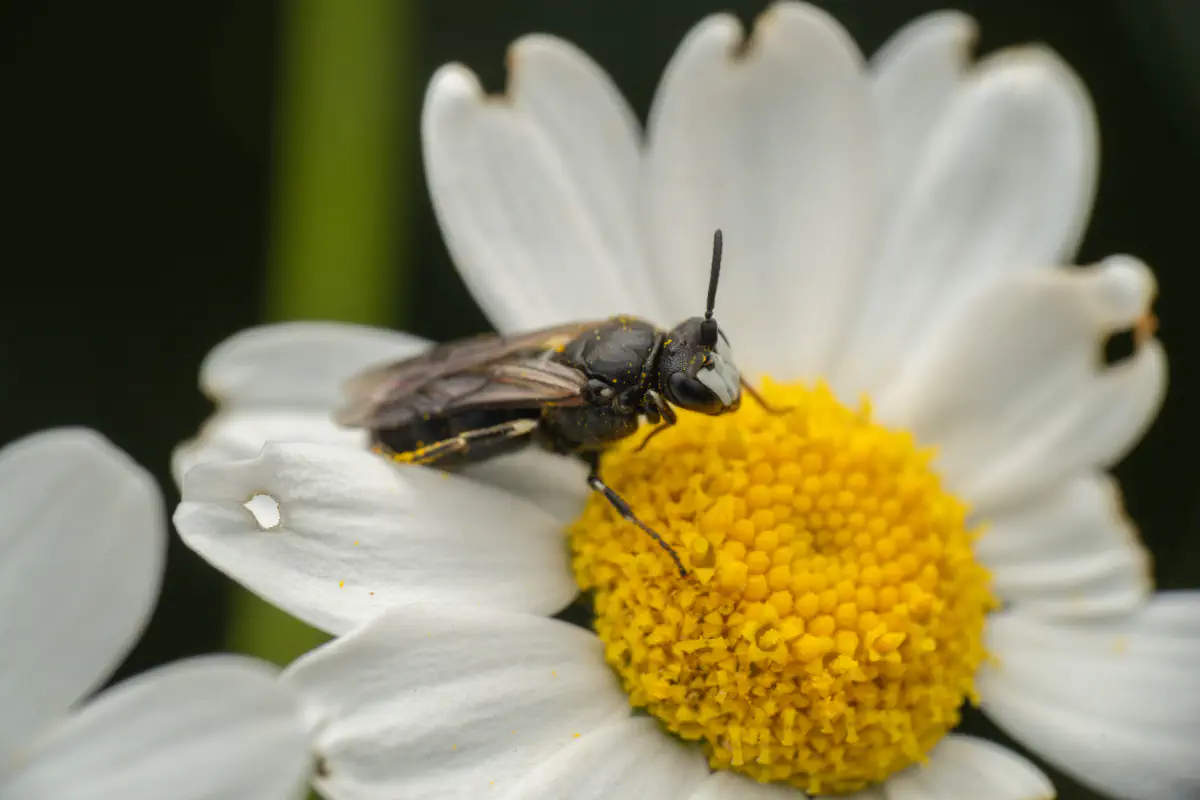
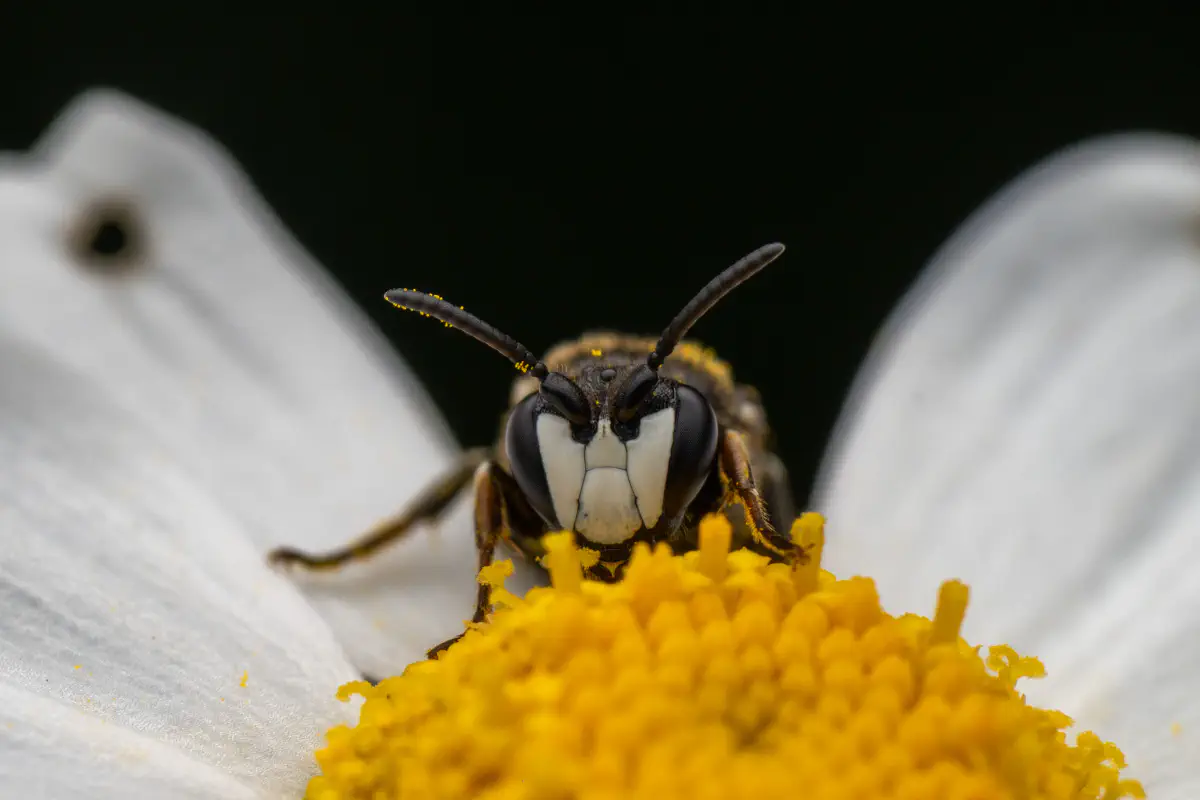
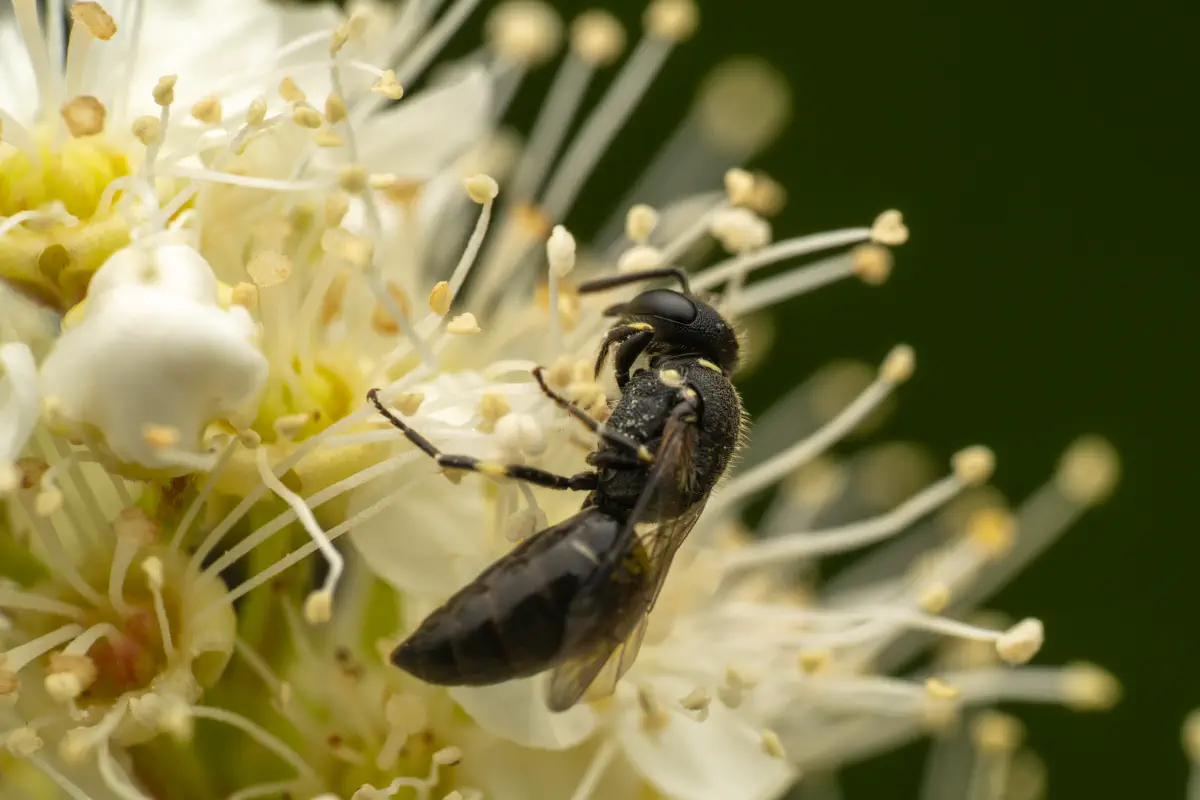
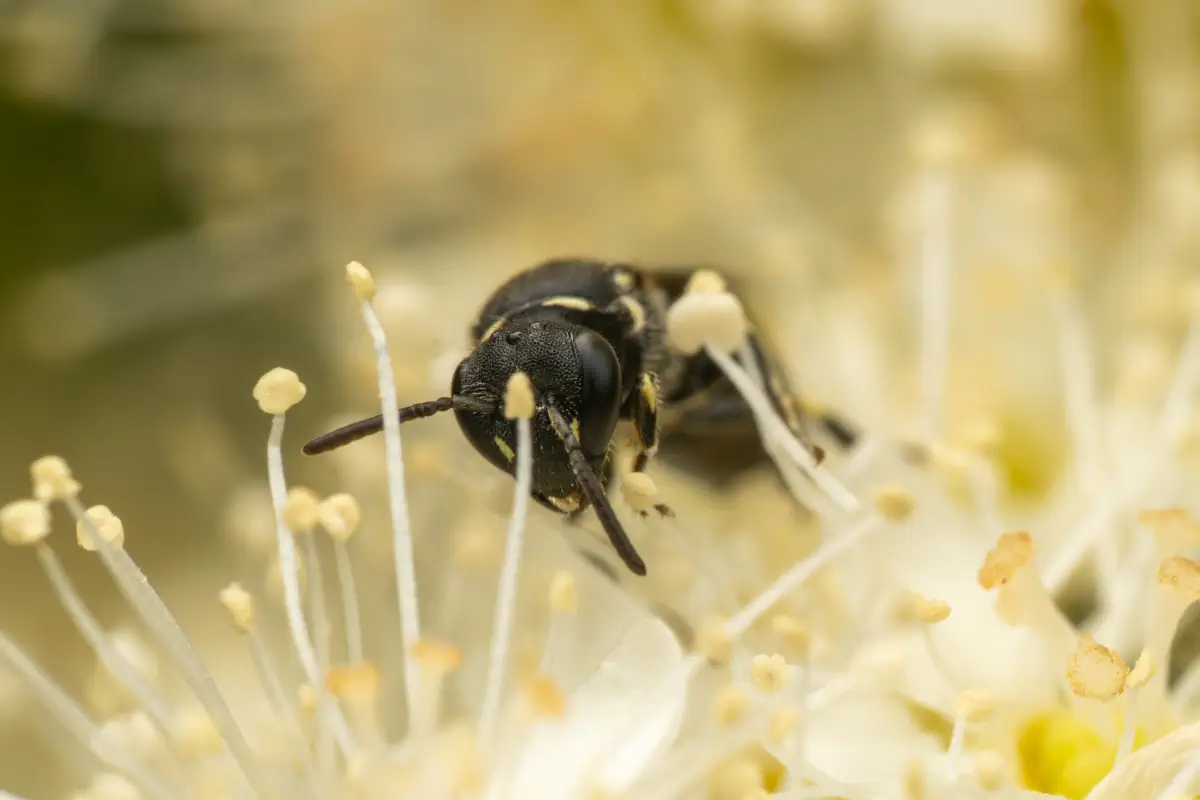
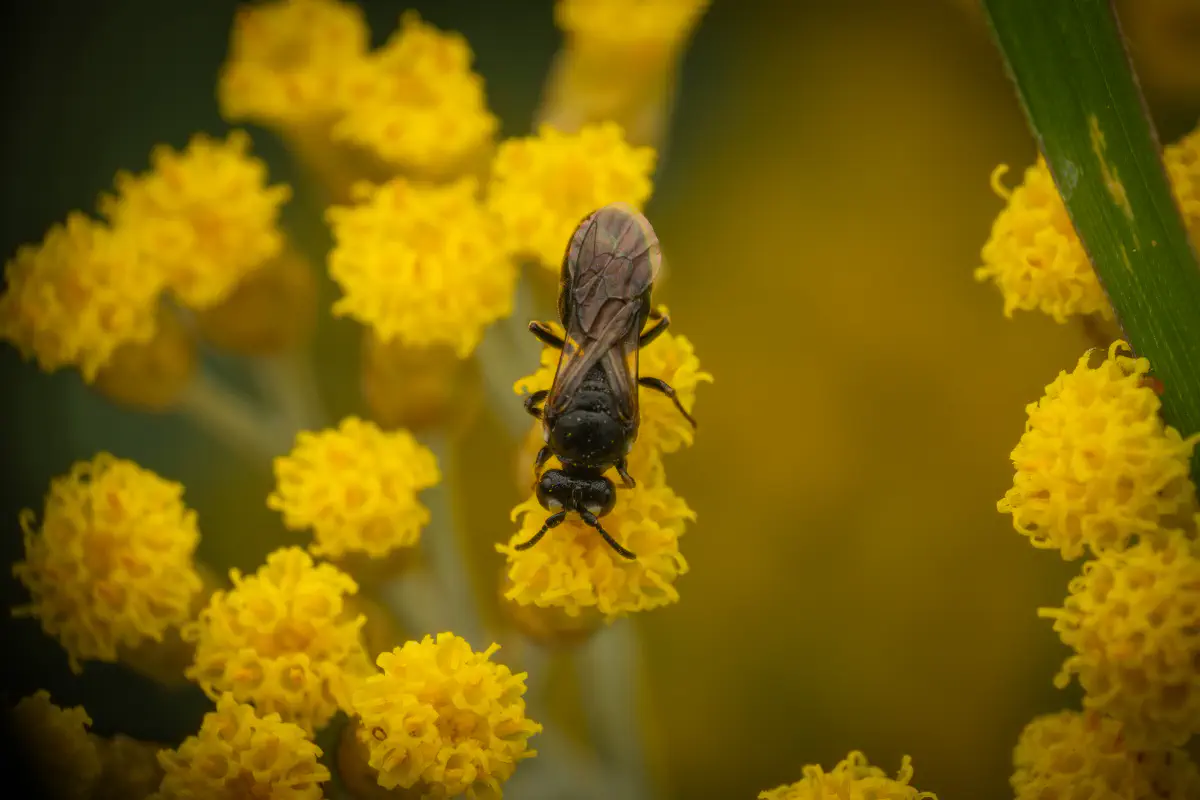
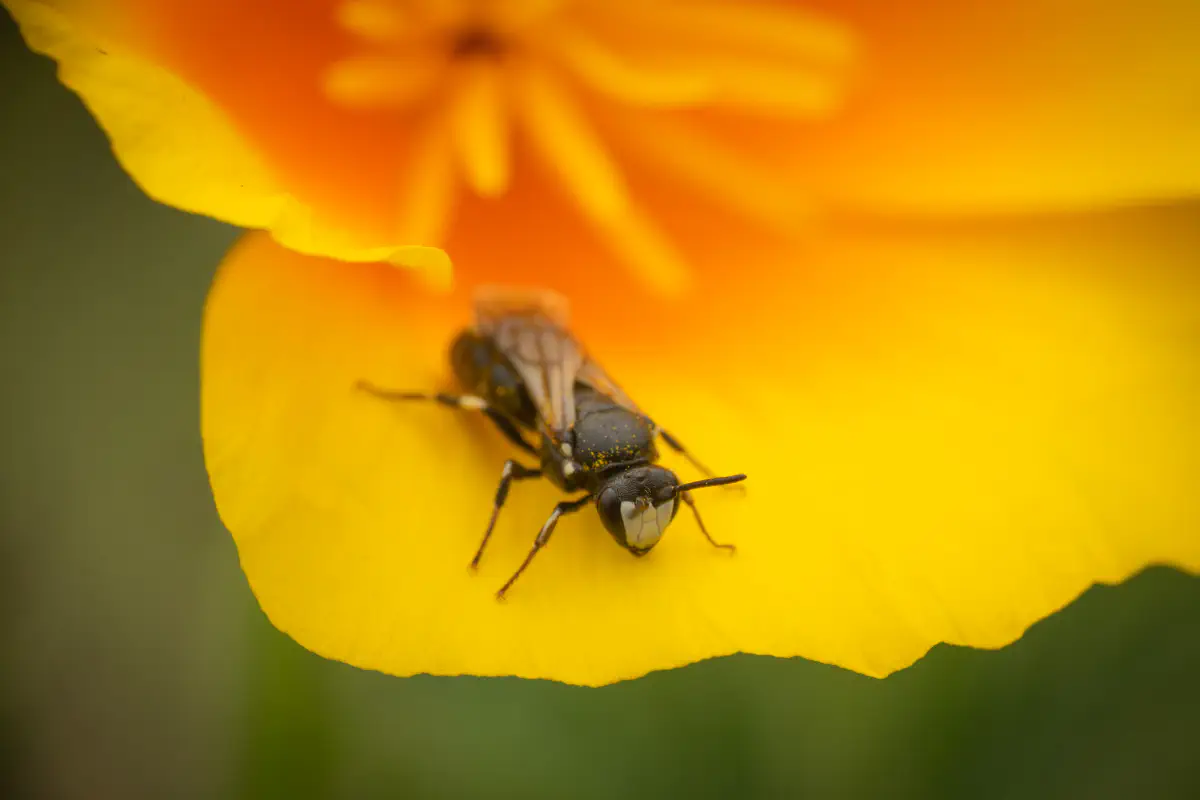
Ancestry Graph
Further Information
„Masked Bees“ on wikipedia.org
„Masked Bees“ on iNaturalist.org
Copyright

This article uses material from the Wikipedia article Hylaeus the free encyclopedia Wikipedia which is released under Creative Commons Attribution-ShareAlike 4.0 International License). On Wikipedia a list of authors is available.

Little beings in print
Order our calendars and books today!
Compiled with love. Printed sustainably. Experience our little beings even more vividly in print. All our publications are available for a small donation.
